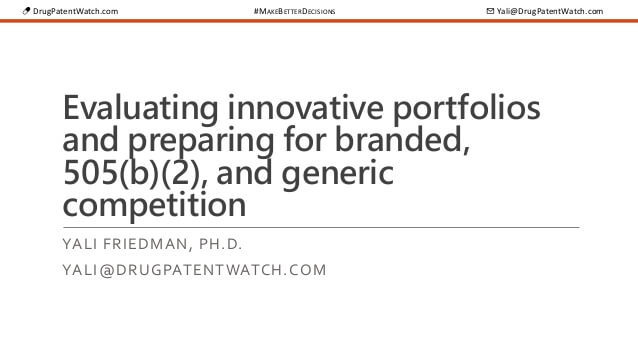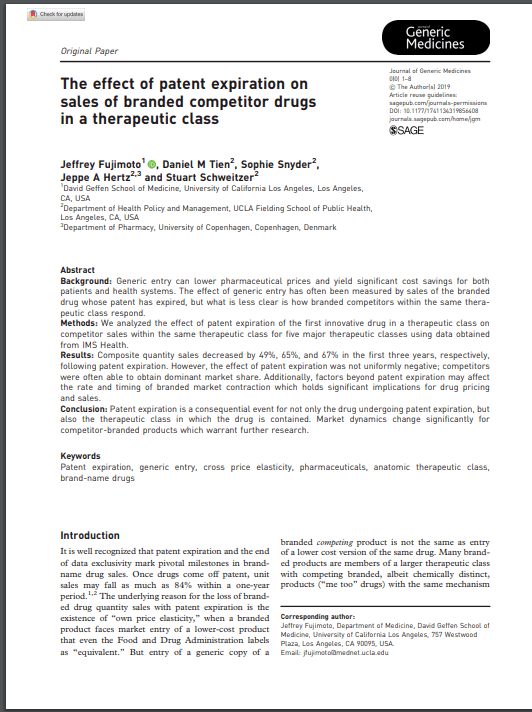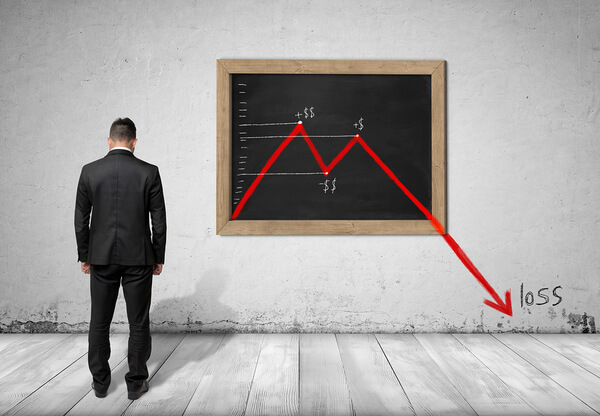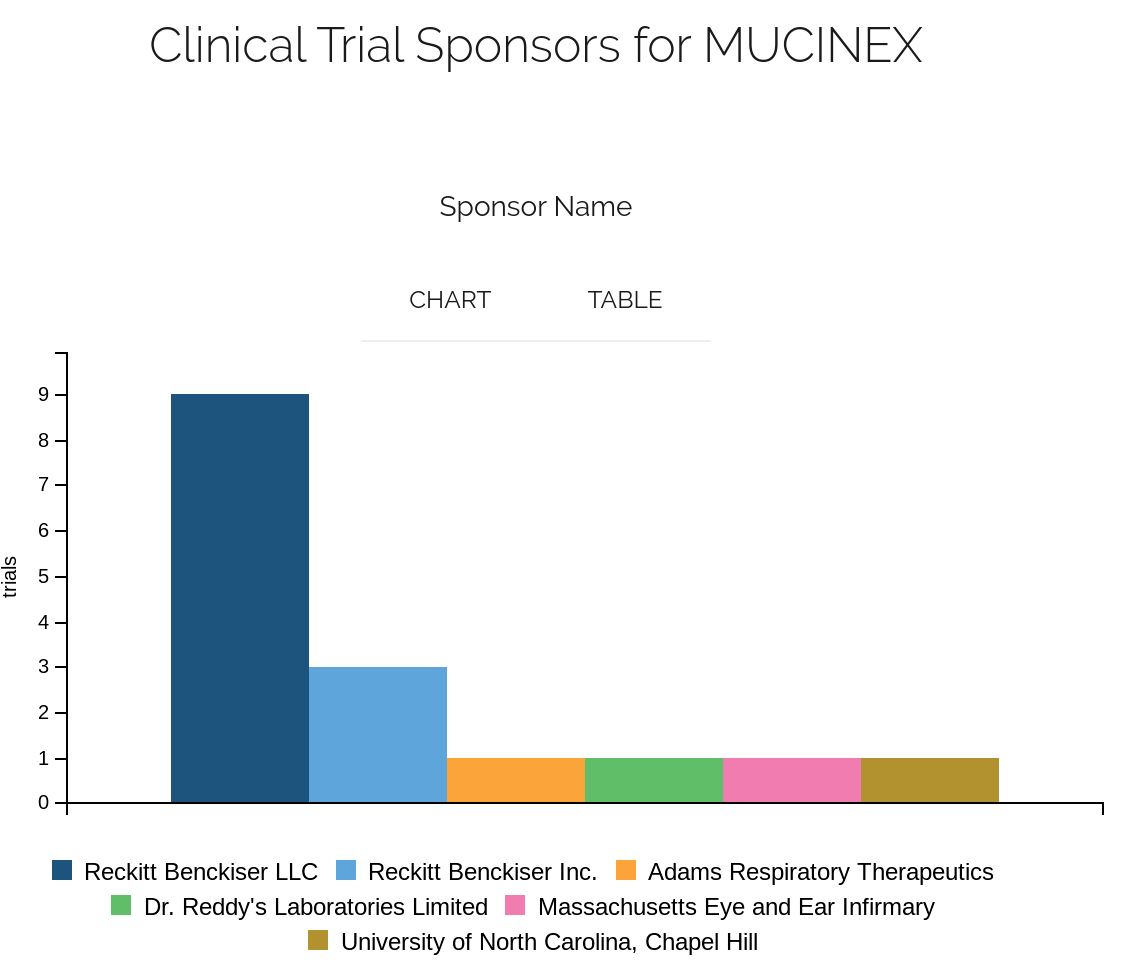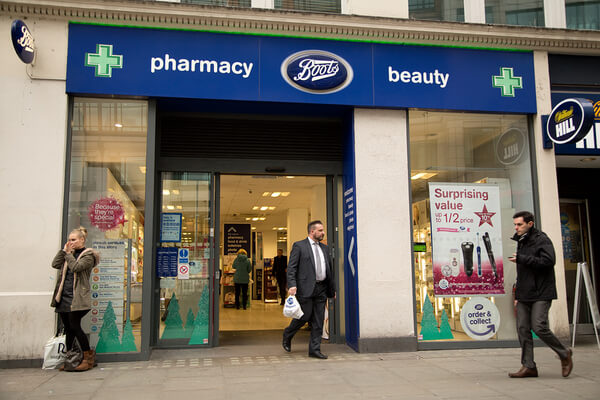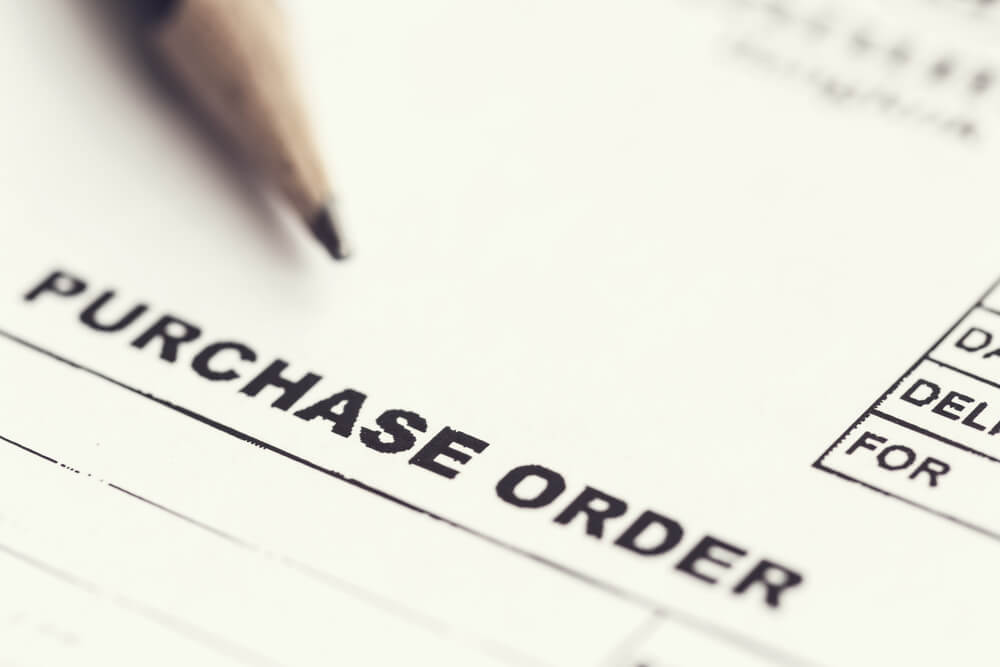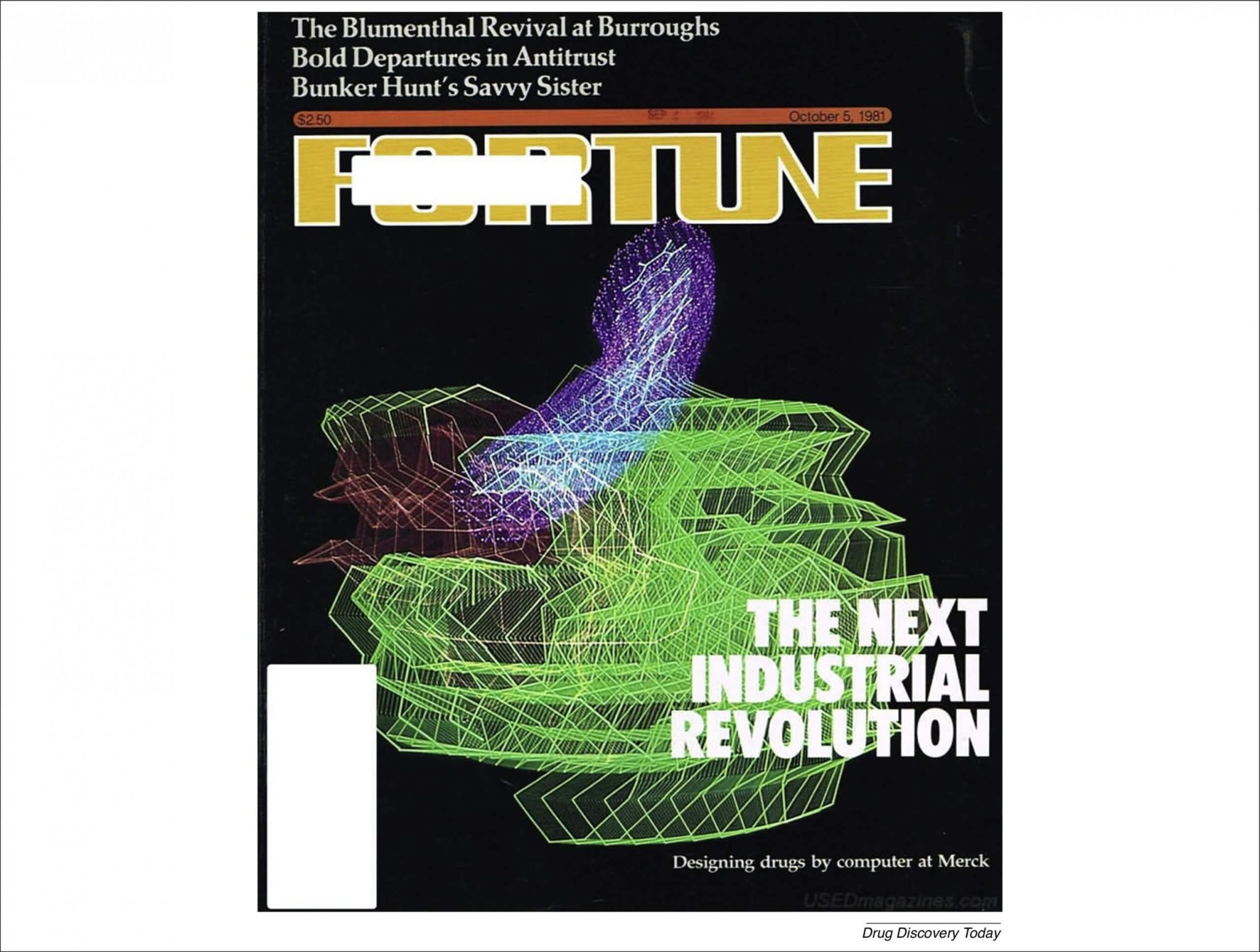The pharmaceutical industry is facing an unprecedented wave of patent expirations, with more than 190 products set to lose exclusivity between 2022 and 2030, putting over $300 billion in sales at risk between 2023 and 2028[1]. This looming “patent cliff” represents a critical challenge for pharmaceutical companies that must develop comprehensive strategies to maximize product value before, during, and after Loss of Exclusivity (LOE). Products losing exclusivity through 2030 currently generate a combined $183.5 billion in annual sales, making it imperative for companies to implement effective value retention strategies[6]. This article explores six proven approaches to navigate the challenges of LOE, providing pharmaceutical executives and brand managers with actionable strategies to mitigate revenue loss, maintain market relevance, and position for continued success beyond patent expiration.
Understanding Loss of Exclusivity and Its Impact
Loss of Exclusivity represents a pivotal transition point in a pharmaceutical product’s lifecycle when patent protection or other market exclusivity provisions expire, opening the door to generic competition. This phase typically begins when a drug is nearing patent expiration or has already lost patent protection, characterized by increased competition, potential revenue decline, and the need for strategic decision-making to extend the product’s commercial viability[5].
The Magnitude of the Current Patent Cliff
The pharmaceutical industry is staring down a widespread loss of exclusivity, with more than 190 products going off-patent between 2022 and 2030[1]. While the industry has faced large-scale patent cliffs before, such as in 2016 when many major sellers like Crestor and Glivec went off-patent, the current wave of expirations presents a far greater challenge. Where the 2016 patent cliff was projected to erode $100 billion in brand-name sales, the current expirations will put over $300 billion in sales at risk between 2023 and 2028[1].
Unique Challenges of the Current Patent Cliff
What makes this latest wave of patent expirations different is the significant presence of biologic medicines among the affected products. Previous LOE waves primarily impacted small molecule medicines, but the higher proportion of biologics could change how quickly and deeply sales drop, as biosimilars typically gain market share more slowly compared to generic competition for small molecules[1].
The Need for Strategic Planning
Late-stage lifecycle management requires a delicate balance of commercial strategy and medical responsibility. As pharmaceutical consultant Dr. Sarah Johnson explains: “Late-stage lifecycle management is about squeezing every ounce of value from a drug while ensuring it continues to meet patient needs. It’s a delicate balance of commercial strategy and medical responsibility”[5]. Companies that act decisively and strategically before LOE can position themselves not just to weather the storm but to thrive beyond it, demonstrating that LOE isn’t the end—it’s the start of a smarter, stronger, and more resilient operation[6].
Strategy 1: Conducting Comprehensive Market Analysis and Strategic Planning
The first critical step in maximizing product value as LOE approaches is conducting a thorough assessment of the market landscape. This foundational work provides the insights needed to develop an effective late-lifecycle strategy tailored to your specific product and market conditions.
Assessing the Current Competitive Landscape
Begin by identifying and studying your current and potential competitors. Analyze their product portfolios, pricing strategies, marketing approaches, and research and development pipelines[5]. Understanding your competition will help you position your drug effectively and anticipate potential threats in the post-LOE environment. How well do you know your competition’s playbook? Have you mapped out the potential generic entrants and their typical market strategies?
Analyzing Patient Needs and Prescriber Behaviors
A deep understanding of patient needs and prescriber behaviors is essential for developing strategies that will maintain loyalty after LOE. What factors drive prescribing decisions? Are there unmet needs that your product addresses better than potential generic alternatives? What aspects of your product do patients value most? These insights will help you develop strategies to differentiate your product and maintain loyalty even in the face of lower-priced alternatives.
Forecasting Post-LOE Market Dynamics
Accurate forecasting of how the market will evolve after LOE is essential for effective planning. Important questions to address include: What decisions do I need to make as my brand approaches LOE? Can I forecast the likely impact on revenue and volume? When will generic players respond? How can I maximize the value of our brands in a generics’ environment?[7] Develop models that predict the pace and extent of erosion, considering factors such as the number of expected generic competitors, pricing dynamics, and potential impacts on different market segments.
Building a Comprehensive Timeline
Effective LOE management requires detailed planning years in advance. Create a comprehensive timeline that maps out key milestones and decision points in the years, months, and days leading up to patent expiration. This timeline should include regulatory considerations, manufacturing plans, pricing adjustments, marketing initiatives, and stakeholder engagement strategies.
Strategy 2: Maximizing Current Drug Value and Pricing Optimization
As LOE approaches, companies must focus on extracting maximum value from their products while they still enjoy exclusivity. This involves sophisticated pricing strategies and value optimization approaches that balance current revenue maximization with preparation for the competitive post-LOE environment.
Implementing Value-Based Pricing Strategies
A disciplined approach to pricing can maximize the value of innovation in the pre-LOE period. The key is to understand how your product’s innovation relates to customers’ value drivers[4]. For pharmaceutical products, this might include factors such as improved efficacy, reduced side effects, better convenience, or cost savings elsewhere in the healthcare system.
Segmenting Customers for Targeted Value Propositions
Effective value maximization requires understanding how your product delivers different value to different customer segments. One pharmaceutical services company increased launch revenue by 50% over three years by conducting in-depth customer and influencer research, enabling them to segment customers by type, business model, and expected production needs and scale[4]. Each segment may have different willingness to pay based on the specific benefits they derive from your product.
Optimizing Pricing Structure and Discount Strategy
Properly pricing a pharmaceutical product requires the right price model and discount guidance to maximize value and minimize leakage. Consider factors such as pack sizes, volume discounts, and market-specific pricing approaches. Set global list prices for anchor SKUs by triangulating across various factors and develop clear discount guidance that achieves strategic objectives while preventing excessive price erosion[4].
Communicating Differentiated Value
Train commercial teams to effectively communicate the differentiated value your product offers to different customer segments. This communication becomes increasingly important as LOE approaches, as it helps build lasting perception of value that may help maintain loyalty even after generic entry[4]. Can you articulate your product’s unique value proposition in terms that resonate with each key stakeholder group?
Strategy 3: Developing Robust Generic Defense Strategies
When generics enter the market, retaining market share becomes critical. Companies need comprehensive defense strategies that slow erosion and protect as much value as possible.
Authorized Generic Strategies
One effective approach is launching an authorized generic version of your product. This allows you to maintain presence in the generic market while potentially cannibalizing sales from competing generics rather than your branded product. Best-in-class approaches can help companies retain up to 50% market share through authorized generics and patient loyalty programs[6].
“When generics enter the market, retaining market share becomes critical. Best-in-class approaches often slow revenue erosion by 10%-30% post-LOE, with some drugs retaining 50% market share through authorized generics and patient loyalty programs.”[6]
Patent Defense and Legal Strategies
While preparing for LOE, companies should still pursue all reasonable avenues to protect intellectual property. AbbVie proved with its patent defense of Humira (adalimumab) that it is possible to protect sales even as rival biosimilars look to take a share of the market[1]. This may include filing for additional patents on manufacturing processes, formulations, or delivery mechanisms, and vigorously defending existing patents against challenges.
Developing Patient Support and Loyalty Programs
Patient support and loyalty programs can be powerful tools for maintaining market share post-LOE. These programs might include financial assistance, adherence support, or enhanced services that generic competitors cannot easily replicate. A key question to consider is: Can a card program slow the erosion of my brand’s market share while facilitating and securing patient retention?[7]
Price Adjustments and Contracting Strategies
Strategic price adjustments and innovative contracting approaches can help maintain market position as LOE approaches. This might involve volume-based contracts with key customers, value-based arrangements tied to outcomes, or strategic price reductions that make your branded product more competitive with anticipated generic pricing.
Strategy 4: Strengthening Lifecycle Management Through Innovation
Lifecycle management offers opportunities to sustain revenue beyond the branded product’s initial exclusivity period. This involves systematic approaches to extend the product’s commercial viability through various forms of innovation.
Indication Expansion and Label Updates
One of the most effective lifecycle management strategies is expanding your product’s approved indications or updating the label to include new patient populations, dosing regimens, or clinical data. Align Strategy recommends systematic evaluation of options to ensure you make the right choice of indications from launch onwards, and mapping indication sequencing strategy options from the lead launch indication[3]. Have you explored all potential therapeutic applications based on your product’s mechanism of action?
Formulation Innovations and Delivery System Improvements
Developing improved formulations or delivery systems can provide additional patent protection and meaningful differentiation from generic competitors. This might include extended-release formulations, combination products, novel delivery devices, or formulations with improved stability or convenience. These innovations should address genuine unmet needs rather than simply seeking to extend exclusivity.
Real-World Evidence and Outcomes Research
Generating robust real-world evidence and outcomes data can support continued differentiation of your product even after LOE. This evidence can demonstrate your product’s value in everyday clinical practice and support its use in specific patient populations or clinical scenarios where generics might be perceived as less suitable.
Exploring New Business Models and Service Offerings
Think beyond the product itself to consider how services or solutions built around your medication could deliver additional value. This might include digital health solutions, diagnostic tools, or comprehensive disease management programs that create an ecosystem of value that generic manufacturers cannot easily replicate.
Strategy 5: Engaging Key Stakeholders and Building Strong Relationships
Maintaining strong relationships with physicians, payers, and patients becomes even more crucial as LOE approaches. These relationships can help preserve loyalty and preference for your product even in the face of generic competition.
Physician Engagement and Education
Develop targeted engagement strategies for healthcare providers that emphasize the unique attributes of your product and build deep scientific understanding of its mechanism of action, clinical profile, and place in therapy. Physicians who thoroughly understand a product’s differentiating factors may be more likely to maintain prescribing habits even when generic alternatives become available.
Payer Strategy and Value Demonstration
Work proactively with payers to demonstrate your product’s value proposition and negotiate arrangements that may help maintain favorable formulary positions post-LOE. This might include innovative contracting approaches, outcomes-based agreements, or value-added services that make your overall offering more attractive than generic alternatives alone.
Patient-Centered Approaches and Support Services
Develop comprehensive patient support programs that address unmet needs and create meaningful connections with patients. These might include assistance with insurance coverage, medication adherence support, educational resources, or connections to patient communities. The goal is to create value beyond the medication itself that patients would lose by switching to a generic alternative.
Key Opinion Leader Development and Advocacy
Identify and engage with key opinion leaders (KOLs) who can help articulate the differentiated value of your product. These influential voices can help shape treatment guidelines, inform clinical practice, and maintain preference for your product in appropriate patient populations even after generic entry.
Strategy 6: Preparing a Seamless Transition Plan for LOE Day
Readiness on LOE day is vital for seamless transitions. Companies need a comprehensive plan for exactly how operations will change when exclusivity expires.
Supply Chain and Manufacturing Adjustments
Plan in advance for how manufacturing volumes and supply chain operations may need to adjust post-LOE. This might include scaling production up or down, optimizing manufacturing efficiency, or strategically managing inventory levels. Having a detailed operational plan in place helps prevent disruptions and ensures efficient resource allocation.
Commercial Team Restructuring and Focus Shifts
Determine how sales, marketing, and market access teams will operate differently after LOE. This might involve reducing the size of the sales force, shifting focus to different customer segments, or realigning incentives to reflect new commercial objectives. Clear communication and change management are essential during this transition.
Financial Planning and Resource Reallocation
Develop detailed financial projections for the post-LOE period and plans for how resources will be reallocated. This ensures that appropriate investment continues in areas that deliver value while costs are reduced in areas that no longer provide adequate returns. How will you balance continued support for the LOE product with investment in future growth drivers?
Monitoring and Adjustment Plans
Create a comprehensive monitoring system to track market developments after LOE and enable rapid adjustments to your strategy. This includes tracking competitor actions, market share changes, pricing dynamics, and stakeholder responses. The ability to quickly adapt to evolving conditions can make a significant difference in post-LOE performance.
Integrating Strategies for Maximum Impact
While each of the six strategies discussed provides valuable approaches for maximizing product value as LOE approaches, their true power comes from integration into a cohesive overall plan.
Creating a Cross-Functional LOE Task Force
Establish a dedicated cross-functional team responsible for orchestrating LOE preparations across the organization. This task force should include representatives from commercial, medical, regulatory, manufacturing, finance, and legal functions to ensure all perspectives are considered and initiatives are well-coordinated.
Balancing Short-term Value Capture with Long-term Sustainability
Effective LOE management requires carefully balancing short-term objectives of maximizing revenue before exclusivity expires with longer-term goals of maintaining product relevance and corporate reputation after generic entry. How will your strategies achieve current financial objectives while positioning for sustainable success in the post-LOE environment?
Aligning LOE Strategy with Portfolio and Corporate Strategy
Ensure that your approach to managing individual products facing LOE aligns with broader portfolio and corporate strategic objectives. For example, one pharmaceutical company treated its launch not as an opportunistic strategy but as a portfolio maximization strategy because it was the first of many innovations to be introduced as part of a new technology platform[4].
Learning from Past LOE Experiences
Pharmaceuticals have faced patent cliffs before, including in 2016 when many major sellers went off-patent[1]. Study both your own company’s past experiences with LOE and those of competitors to identify successful approaches and pitfalls to avoid. What patterns emerge from analyzing how different products and different companies have navigated LOE transitions?
Case Examples of Successful LOE Management
Pfizer’s Strategy for Managing Multiple Patent Cliffs
Pfizer faces a challenging situation where four of its products—Eliquis, Ibrance, Prevnar 13, and Xtandi—are facing patent expiration between now and 2027[1]. The company is employing multiple strategies to navigate these patent cliffs, including M&A activity and reductions in expenditure to prepare for the expected revenue impacts.
AbbVie’s Patent Defense of Humira
AbbVie demonstrated that it is possible to protect sales even as rival biosimilars emerge through aggressive patent defense strategies. Their approach to protecting Humira (adalimumab) effectively extended the product’s commercial exclusivity and provides a case study in comprehensive intellectual property management[1].
Successful Value Pricing Case Study
One pharmaceutical services company developed a new solution that was significantly more efficient than the next-best product available. By applying a comprehensive six-step approach to value pricing innovation, the company was able to identify opportunities to increase launch revenue by 50% over three years. Key to this success was conducting in-depth customer and influencer research, segmenting customers by type and business model, and understanding how the innovation translated into customers’ value drivers[4].
Generic Defense Success Story
For companies implementing comprehensive LOE strategies, results have been compelling. Best-in-class approaches often slow revenue erosion by 10%-30% post-LOE, with some drugs retaining 50% market share through authorized generics and patient loyalty programs. Additionally, well-prepared pipelines ensure double-digit growth for successor products, safeguarding long-term sustainability[6].
Industry Trends Shaping LOE Management
The Rising Impact of Biologics on LOE Dynamics
The current wave of patent expirations differs from previous ones due to the presence of a significant number of biologic medicines among the affected products. This changes how quickly and deeply sales typically drop, as biosimilars gain market share more slowly compared to small molecule generics[1]. How will this change in product mix affect traditional assumptions about post-LOE revenue erosion?
Regulatory Developments Affecting Exclusivity
Stay attuned to evolving regulatory frameworks that may impact exclusivity periods or the pathways for approval of generic or biosimilar competitors. Changes in regulatory approaches can significantly affect LOE planning timelines and strategies.
Digital Transformation and Its Impact on LOE Management
Digital technologies are creating new opportunities for product differentiation, patient engagement, and value demonstration that can be leveraged in LOE strategies. From digital therapeutics to remote monitoring to advanced analytics for identifying optimal patient populations, how might these tools be incorporated into your LOE approach?
The Evolving Payer Landscape
Changes in how payers approach formulary management, utilization controls, and value assessment all impact how companies should prepare for LOE. Understanding and adapting to these evolutions is essential for successful navigation of the post-exclusivity environment.
Key Takeaways
Effective management of products approaching Loss of Exclusivity requires comprehensive planning and strategic execution across multiple dimensions:
- Early Preparation is Essential: Begin planning for LOE at least 3-5 years before patent expiration to allow time for strategy development and implementation.
- Integrated Strategy is Critical: The most successful approaches combine elements from all six strategies—market analysis, value maximization, generic defense, lifecycle management, stakeholder engagement, and transition planning.
- Value Demonstration Matters: Clearly articulating and demonstrating your product’s differentiated value to all stakeholders becomes increasingly important as LOE approaches.
- Balance Short and Long-Term Objectives: Effective LOE management balances maximizing near-term revenue with maintaining long-term product relevance and corporate reputation.
- Continuous Monitoring and Adaptation: The post-LOE environment is dynamic, requiring ongoing assessment and strategy adjustment to optimize outcomes.
- LOE as Opportunity: Companies that view LOE not just as a threat but as an opportunity to rethink business models and value creation can emerge stronger and more resilient.
Frequently Asked Questions
How early should pharmaceutical companies begin planning for Loss of Exclusivity?
Comprehensive LOE planning should ideally begin 3-5 years before patent expiration. This timeline allows for thorough market analysis, development and implementation of lifecycle management initiatives, preparation of stakeholder engagement strategies, and creation of detailed transition plans. Early planning is particularly important for products with complex market dynamics or significant revenue contribution to the company.
What are the main differences between managing LOE for small molecule drugs versus biologics?
Biologics typically face different post-LOE dynamics compared to small molecules. The development and approval process for biosimilars is more complex and costly than for generic small molecules, often resulting in fewer competitors and less price erosion. Additionally, there may be greater physician hesitancy to switch patients from the originator biologic to biosimilars, particularly for certain therapeutic areas. These differences often necessitate tailored LOE strategies for biologics that focus on quality, reliability, and the originator company’s experience with the molecule.
How can companies measure the success of their LOE management strategies?
Success metrics for LOE management should include both financial and strategic indicators. Financial metrics might include the rate of revenue erosion compared to forecasts, retention of market share, and profitability of the product post-LOE. Strategic metrics could include continued prescriber loyalty, successful transition of appropriate patients to next-generation products, maintenance of positive corporate reputation, and effective resource reallocation to growth areas. The most comprehensive assessment would compare actual outcomes against multiple pre-LOE scenarios modeled during the planning phase.
What roles should different departments play in LOE planning and execution?
Effective LOE management requires coordination across nearly all organizational functions. Commercial teams focus on pricing strategies, stakeholder engagement, and marketing plans; R&D contributes to lifecycle management initiatives; medical affairs develops scientific communication strategies and real-world evidence; manufacturing optimizes production processes and considers authorized generic production; legal manages patent strategy and potential litigation; regulatory navigates exclusivity provisions and potential new approvals; and finance provides modeling and resource allocation guidance. A cross-functional governance structure with clear accountability is essential for coordinating these diverse workstreams.
How is digital transformation changing the approach to LOE management?
Digital technologies are creating new opportunities throughout the LOE management process. Advanced analytics and artificial intelligence can improve market forecasting and customer segmentation. Digital engagement platforms enable more targeted and efficient communication with healthcare providers and patients. Digital therapeutics and companion apps can create additional value around the core product that may be difficult for generic competitors to replicate. Real-world data platforms facilitate the collection of evidence that demonstrates differentiated value. Forward-thinking companies are integrating these digital capabilities into their LOE strategies to create new sources of competitive advantage in the post-exclusivity environment.
Sources Cited:
- BioSpace – How Pfizer, Bristol Myers Squibb and Johnson & Johnson are Confronting Patent Cliffs
- Bain – How a Pharmaceutical Services Company Mastered the Art of Value Pricing
- DrugPatentWatch – 6 Steps to Effective Late-Stage Lifecycle Drug Management
- LinkedIn – Proven Strategies for Pharma Success Post-Loss of Exclusivity
- IQVIA – Considerations for Late Stage and LOE Stage Products
6 Ways to Maximize Product Value as Loss of Exclusivity Approaches
The pharmaceutical industry is facing an unprecedented wave of patent expirations, with more than 190 products set to lose exclusivity between 2022 and 2030, putting over $300 billion in sales at risk between 2023 and 2028[1]. This looming “patent cliff” represents a critical challenge for pharmaceutical companies that must develop comprehensive strategies to maximize product value before, during, and after Loss of Exclusivity (LOE). Products losing exclusivity through 2030 currently generate a combined $183.5 billion in annual sales, making it imperative for companies to implement effective value retention strategies[6]. This article explores six proven approaches to navigate the challenges of LOE, providing pharmaceutical executives and brand managers with actionable strategies to mitigate revenue loss, maintain market relevance, and position for continued success beyond patent expiration.
Understanding Loss of Exclusivity and Its Impact
Loss of Exclusivity represents a pivotal transition point in a pharmaceutical product’s lifecycle when patent protection or other market exclusivity provisions expire, opening the door to generic competition. This phase typically begins when a drug is nearing patent expiration or has already lost patent protection, characterized by increased competition, potential revenue decline, and the need for strategic decision-making to extend the product’s commercial viability[5].
The Magnitude of the Current Patent Cliff
The pharmaceutical industry is staring down a widespread loss of exclusivity, with more than 190 products going off-patent between 2022 and 2030[1]. While the industry has faced large-scale patent cliffs before, such as in 2016 when many major sellers like Crestor and Glivec went off-patent, the current wave of expirations presents a far greater challenge. Where the 2016 patent cliff was projected to erode $100 billion in brand-name sales, the current expirations will put over $300 billion in sales at risk between 2023 and 2028[1].
Unique Challenges of the Current Patent Cliff
What makes this latest wave of patent expirations different is the significant presence of biologic medicines among the affected products. Previous LOE waves primarily impacted small molecule medicines, but the higher proportion of biologics could change how quickly and deeply sales drop, as biosimilars typically gain market share more slowly compared to generic competition for small molecules[1].
The Need for Strategic Planning
Late-stage lifecycle management requires a delicate balance of commercial strategy and medical responsibility. As pharmaceutical consultant Dr. Sarah Johnson explains: “Late-stage lifecycle management is about squeezing every ounce of value from a drug while ensuring it continues to meet patient needs. It’s a delicate balance of commercial strategy and medical responsibility”[5]. Companies that act decisively and strategically before LOE can position themselves not just to weather the storm but to thrive beyond it, demonstrating that LOE isn’t the end—it’s the start of a smarter, stronger, and more resilient operation[6].
Strategy 1: Conducting Comprehensive Market Analysis and Strategic Planning
The first critical step in maximizing product value as LOE approaches is conducting a thorough assessment of the market landscape. This foundational work provides the insights needed to develop an effective late-lifecycle strategy tailored to your specific product and market conditions.
Assessing the Current Competitive Landscape
Begin by identifying and studying your current and potential competitors. Analyze their product portfolios, pricing strategies, marketing approaches, and research and development pipelines[5]. Understanding your competition will help you position your drug effectively and anticipate potential threats in the post-LOE environment. How well do you know your competition’s playbook? Have you mapped out the potential generic entrants and their typical market strategies?
Analyzing Patient Needs and Prescriber Behaviors
A deep understanding of patient needs and prescriber behaviors is essential for developing strategies that will maintain loyalty after LOE. What factors drive prescribing decisions? Are there unmet needs that your product addresses better than potential generic alternatives? What aspects of your product do patients value most? These insights will help you develop strategies to differentiate your product and maintain loyalty even in the face of lower-priced alternatives.
Forecasting Post-LOE Market Dynamics
Accurate forecasting of how the market will evolve after LOE is essential for effective planning. Important questions to address include: What decisions do I need to make as my brand approaches LOE? Can I forecast the likely impact on revenue and volume? When will generic players respond? How can I maximize the value of our brands in a generics’ environment?[7] Develop models that predict the pace and extent of erosion, considering factors such as the number of expected generic competitors, pricing dynamics, and potential impacts on different market segments.
Building a Comprehensive Timeline
Effective LOE management requires detailed planning years in advance. Create a comprehensive timeline that maps out key milestones and decision points in the years, months, and days leading up to patent expiration. This timeline should include regulatory considerations, manufacturing plans, pricing adjustments, marketing initiatives, and stakeholder engagement strategies.
Strategy 2: Maximizing Current Drug Value and Pricing Optimization
As LOE approaches, companies must focus on extracting maximum value from their products while they still enjoy exclusivity. This involves sophisticated pricing strategies and value optimization approaches that balance current revenue maximization with preparation for the competitive post-LOE environment.
Implementing Value-Based Pricing Strategies
A disciplined approach to pricing can maximize the value of innovation in the pre-LOE period. The key is to understand how your product’s innovation relates to customers’ value drivers[4]. For pharmaceutical products, this might include factors such as improved efficacy, reduced side effects, better convenience, or cost savings elsewhere in the healthcare system.
Segmenting Customers for Targeted Value Propositions
Effective value maximization requires understanding how your product delivers different value to different customer segments. One pharmaceutical services company increased launch revenue by 50% over three years by conducting in-depth customer and influencer research, enabling them to segment customers by type, business model, and expected production needs and scale[4]. Each segment may have different willingness to pay based on the specific benefits they derive from your product.
Optimizing Pricing Structure and Discount Strategy
Properly pricing a pharmaceutical product requires the right price model and discount guidance to maximize value and minimize leakage. Consider factors such as pack sizes, volume discounts, and market-specific pricing approaches. Set global list prices for anchor SKUs by triangulating across various factors and develop clear discount guidance that achieves strategic objectives while preventing excessive price erosion[4].
Communicating Differentiated Value
Train commercial teams to effectively communicate the differentiated value your product offers to different customer segments. This communication becomes increasingly important as LOE approaches, as it helps build lasting perception of value that may help maintain loyalty even after generic entry[4]. Can you articulate your product’s unique value proposition in terms that resonate with each key stakeholder group?
Strategy 3: Developing Robust Generic Defense Strategies
When generics enter the market, retaining market share becomes critical. Companies need comprehensive defense strategies that slow erosion and protect as much value as possible.
Authorized Generic Strategies
One effective approach is launching an authorized generic version of your product. This allows you to maintain presence in the generic market while potentially cannibalizing sales from competing generics rather than your branded product. Best-in-class approaches can help companies retain up to 50% market share through authorized generics and patient loyalty programs[6].
“When generics enter the market, retaining market share becomes critical. Best-in-class approaches often slow revenue erosion by 10%-30% post-LOE, with some drugs retaining 50% market share through authorized generics and patient loyalty programs.”[6]
Patent Defense and Legal Strategies
While preparing for LOE, companies should still pursue all reasonable avenues to protect intellectual property. AbbVie proved with its patent defense of Humira (adalimumab) that it is possible to protect sales even as rival biosimilars look to take a share of the market[1]. This may include filing for additional patents on manufacturing processes, formulations, or delivery mechanisms, and vigorously defending existing patents against challenges.
Developing Patient Support and Loyalty Programs
Patient support and loyalty programs can be powerful tools for maintaining market share post-LOE. These programs might include financial assistance, adherence support, or enhanced services that generic competitors cannot easily replicate. A key question to consider is: Can a card program slow the erosion of my brand’s market share while facilitating and securing patient retention?[7]
Price Adjustments and Contracting Strategies
Strategic price adjustments and innovative contracting approaches can help maintain market position as LOE approaches. This might involve volume-based contracts with key customers, value-based arrangements tied to outcomes, or strategic price reductions that make your branded product more competitive with anticipated generic pricing.
Strategy 4: Strengthening Lifecycle Management Through Innovation
Lifecycle management offers opportunities to sustain revenue beyond the branded product’s initial exclusivity period. This involves systematic approaches to extend the product’s commercial viability through various forms of innovation.
Indication Expansion and Label Updates
One of the most effective lifecycle management strategies is expanding your product’s approved indications or updating the label to include new patient populations, dosing regimens, or clinical data. Align Strategy recommends systematic evaluation of options to ensure you make the right choice of indications from launch onwards, and mapping indication sequencing strategy options from the lead launch indication[3]. Have you explored all potential therapeutic applications based on your product’s mechanism of action?
Formulation Innovations and Delivery System Improvements
Developing improved formulations or delivery systems can provide additional patent protection and meaningful differentiation from generic competitors. This might include extended-release formulations, combination products, novel delivery devices, or formulations with improved stability or convenience. These innovations should address genuine unmet needs rather than simply seeking to extend exclusivity.
Real-World Evidence and Outcomes Research
Generating robust real-world evidence and outcomes data can support continued differentiation of your product even after LOE. This evidence can demonstrate your product’s value in everyday clinical practice and support its use in specific patient populations or clinical scenarios where generics might be perceived as less suitable.
Exploring New Business Models and Service Offerings
Think beyond the product itself to consider how services or solutions built around your medication could deliver additional value. This might include digital health solutions, diagnostic tools, or comprehensive disease management programs that create an ecosystem of value that generic manufacturers cannot easily replicate.
Strategy 5: Engaging Key Stakeholders and Building Strong Relationships
Maintaining strong relationships with physicians, payers, and patients becomes even more crucial as LOE approaches. These relationships can help preserve loyalty and preference for your product even in the face of generic competition.
Physician Engagement and Education
Develop targeted engagement strategies for healthcare providers that emphasize the unique attributes of your product and build deep scientific understanding of its mechanism of action, clinical profile, and place in therapy. Physicians who thoroughly understand a product’s differentiating factors may be more likely to maintain prescribing habits even when generic alternatives become available.
Payer Strategy and Value Demonstration
Work proactively with payers to demonstrate your product’s value proposition and negotiate arrangements that may help maintain favorable formulary positions post-LOE. This might include innovative contracting approaches, outcomes-based agreements, or value-added services that make your overall offering more attractive than generic alternatives alone.
Patient-Centered Approaches and Support Services
Develop comprehensive patient support programs that address unmet needs and create meaningful connections with patients. These might include assistance with insurance coverage, medication adherence support, educational resources, or connections to patient communities. The goal is to create value beyond the medication itself that patients would lose by switching to a generic alternative.
Key Opinion Leader Development and Advocacy
Identify and engage with key opinion leaders (KOLs) who can help articulate the differentiated value of your product. These influential voices can help shape treatment guidelines, inform clinical practice, and maintain preference for your product in appropriate patient populations even after generic entry.
Strategy 6: Preparing a Seamless Transition Plan for LOE Day
Readiness on LOE day is vital for seamless transitions. Companies need a comprehensive plan for exactly how operations will change when exclusivity expires.
Supply Chain and Manufacturing Adjustments
Plan in advance for how manufacturing volumes and supply chain operations may need to adjust post-LOE. This might include scaling production up or down, optimizing manufacturing efficiency, or strategically managing inventory levels. Having a detailed operational plan in place helps prevent disruptions and ensures efficient resource allocation.
Commercial Team Restructuring and Focus Shifts
Determine how sales, marketing, and market access teams will operate differently after LOE. This might involve reducing the size of the sales force, shifting focus to different customer segments, or realigning incentives to reflect new commercial objectives. Clear communication and change management are essential during this transition.
Financial Planning and Resource Reallocation
Develop detailed financial projections for the post-LOE period and plans for how resources will be reallocated. This ensures that appropriate investment continues in areas that deliver value while costs are reduced in areas that no longer provide adequate returns. How will you balance continued support for the LOE product with investment in future growth drivers?
Monitoring and Adjustment Plans
Create a comprehensive monitoring system to track market developments after LOE and enable rapid adjustments to your strategy. This includes tracking competitor actions, market share changes, pricing dynamics, and stakeholder responses. The ability to quickly adapt to evolving conditions can make a significant difference in post-LOE performance.
Integrating Strategies for Maximum Impact
While each of the six strategies discussed provides valuable approaches for maximizing product value as LOE approaches, their true power comes from integration into a cohesive overall plan.
Creating a Cross-Functional LOE Task Force
Establish a dedicated cross-functional team responsible for orchestrating LOE preparations across the organization. This task force should include representatives from commercial, medical, regulatory, manufacturing, finance, and legal functions to ensure all perspectives are considered and initiatives are well-coordinated.
Balancing Short-term Value Capture with Long-term Sustainability
Effective LOE management requires carefully balancing short-term objectives of maximizing revenue before exclusivity expires with longer-term goals of maintaining product relevance and corporate reputation after generic entry. How will your strategies achieve current financial objectives while positioning for sustainable success in the post-LOE environment?
Aligning LOE Strategy with Portfolio and Corporate Strategy
Ensure that your approach to managing individual products facing LOE aligns with broader portfolio and corporate strategic objectives. For example, one pharmaceutical company treated its launch not as an opportunistic strategy but as a portfolio maximization strategy because it was the first of many innovations to be introduced as part of a new technology platform[4].
Learning from Past LOE Experiences
Pharmaceuticals have faced patent cliffs before, including in 2016 when many major sellers went off-patent[1]. Study both your own company’s past experiences with LOE and those of competitors to identify successful approaches and pitfalls to avoid. What patterns emerge from analyzing how different products and different companies have navigated LOE transitions?
Case Examples of Successful LOE Management
Pfizer’s Strategy for Managing Multiple Patent Cliffs
Pfizer faces a challenging situation where four of its products—Eliquis, Ibrance, Prevnar 13, and Xtandi—are facing patent expiration between now and 2027[1]. The company is employing multiple strategies to navigate these patent cliffs, including M&A activity and reductions in expenditure to prepare for the expected revenue impacts.
AbbVie’s Patent Defense of Humira
AbbVie demonstrated that it is possible to protect sales even as rival biosimilars emerge through aggressive patent defense strategies. Their approach to protecting Humira (adalimumab) effectively extended the product’s commercial exclusivity and provides a case study in comprehensive intellectual property management[1].
Successful Value Pricing Case Study
One pharmaceutical services company developed a new solution that was significantly more efficient than the next-best product available. By applying a comprehensive six-step approach to value pricing innovation, the company was able to identify opportunities to increase launch revenue by 50% over three years. Key to this success was conducting in-depth customer and influencer research, segmenting customers by type and business model, and understanding how the innovation translated into customers’ value drivers[4].
Generic Defense Success Story
For companies implementing comprehensive LOE strategies, results have been compelling. Best-in-class approaches often slow revenue erosion by 10%-30% post-LOE, with some drugs retaining 50% market share through authorized generics and patient loyalty programs. Additionally, well-prepared pipelines ensure double-digit growth for successor products, safeguarding long-term sustainability[6].
Industry Trends Shaping LOE Management
The Rising Impact of Biologics on LOE Dynamics
The current wave of patent expirations differs from previous ones due to the presence of a significant number of biologic medicines among the affected products. This changes how quickly and deeply sales typically drop, as biosimilars gain market share more slowly compared to small molecule generics[1]. How will this change in product mix affect traditional assumptions about post-LOE revenue erosion?
Regulatory Developments Affecting Exclusivity
Stay attuned to evolving regulatory frameworks that may impact exclusivity periods or the pathways for approval of generic or biosimilar competitors. Changes in regulatory approaches can significantly affect LOE planning timelines and strategies.
Digital Transformation and Its Impact on LOE Management
Digital technologies are creating new opportunities for product differentiation, patient engagement, and value demonstration that can be leveraged in LOE strategies. From digital therapeutics to remote monitoring to advanced analytics for identifying optimal patient populations, how might these tools be incorporated into your LOE approach?
The Evolving Payer Landscape
Changes in how payers approach formulary management, utilization controls, and value assessment all impact how companies should prepare for LOE. Understanding and adapting to these evolutions is essential for successful navigation of the post-exclusivity environment.
Key Takeaways
Effective management of products approaching Loss of Exclusivity requires comprehensive planning and strategic execution across multiple dimensions:
- Early Preparation is Essential: Begin planning for LOE at least 3-5 years before patent expiration to allow time for strategy development and implementation.
- Integrated Strategy is Critical: The most successful approaches combine elements from all six strategies—market analysis, value maximization, generic defense, lifecycle management, stakeholder engagement, and transition planning.
- Value Demonstration Matters: Clearly articulating and demonstrating your product’s differentiated value to all stakeholders becomes increasingly important as LOE approaches.
- Balance Short and Long-Term Objectives: Effective LOE management balances maximizing near-term revenue with maintaining long-term product relevance and corporate reputation.
- Continuous Monitoring and Adaptation: The post-LOE environment is dynamic, requiring ongoing assessment and strategy adjustment to optimize outcomes.
- LOE as Opportunity: Companies that view LOE not just as a threat but as an opportunity to rethink business models and value creation can emerge stronger and more resilient.
Frequently Asked Questions
How early should pharmaceutical companies begin planning for Loss of Exclusivity?
Comprehensive LOE planning should ideally begin 3-5 years before patent expiration. This timeline allows for thorough market analysis, development and implementation of lifecycle management initiatives, preparation of stakeholder engagement strategies, and creation of detailed transition plans. Early planning is particularly important for products with complex market dynamics or significant revenue contribution to the company.
What are the main differences between managing LOE for small molecule drugs versus biologics?
Biologics typically face different post-LOE dynamics compared to small molecules. The development and approval process for biosimilars is more complex and costly than for generic small molecules, often resulting in fewer competitors and less price erosion. Additionally, there may be greater physician hesitancy to switch patients from the originator biologic to biosimilars, particularly for certain therapeutic areas. These differences often necessitate tailored LOE strategies for biologics that focus on quality, reliability, and the originator company’s experience with the molecule.
How can companies measure the success of their LOE management strategies?
Success metrics for LOE management should include both financial and strategic indicators. Financial metrics might include the rate of revenue erosion compared to forecasts, retention of market share, and profitability of the product post-LOE. Strategic metrics could include continued prescriber loyalty, successful transition of appropriate patients to next-generation products, maintenance of positive corporate reputation, and effective resource reallocation to growth areas. The most comprehensive assessment would compare actual outcomes against multiple pre-LOE scenarios modeled during the planning phase.
What roles should different departments play in LOE planning and execution?
Effective LOE management requires coordination across nearly all organizational functions. Commercial teams focus on pricing strategies, stakeholder engagement, and marketing plans; R&D contributes to lifecycle management initiatives; medical affairs develops scientific communication strategies and real-world evidence; manufacturing optimizes production processes and considers authorized generic production; legal manages patent strategy and potential litigation; regulatory navigates exclusivity provisions and potential new approvals; and finance provides modeling and resource allocation guidance. A cross-functional governance structure with clear accountability is essential for coordinating these diverse workstreams.
How is digital transformation changing the approach to LOE management?
Digital technologies are creating new opportunities throughout the LOE management process. Advanced analytics and artificial intelligence can improve market forecasting and customer segmentation. Digital engagement platforms enable more targeted and efficient communication with healthcare providers and patients. Digital therapeutics and companion apps can create additional value around the core product that may be difficult for generic competitors to replicate. Real-world data platforms facilitate the collection of evidence that demonstrates differentiated value. Forward-thinking companies are integrating these digital capabilities into their LOE strategies to create new sources of competitive advantage in the post-exclusivity environment.
Sources Cited:
- BioSpace – How Pfizer, Bristol Myers Squibb and Johnson & Johnson are Confronting Patent Cliffs
- Bain – How a Pharmaceutical Services Company Mastered the Art of Value Pricing
- DrugPatentWatch – 6 Steps to Effective Late-Stage Lifecycle Drug Management
- LinkedIn – Proven Strategies for Pharma Success Post-Loss of Exclusivity
- IQVIA – Considerations for Late Stage and LOE Stage Products



